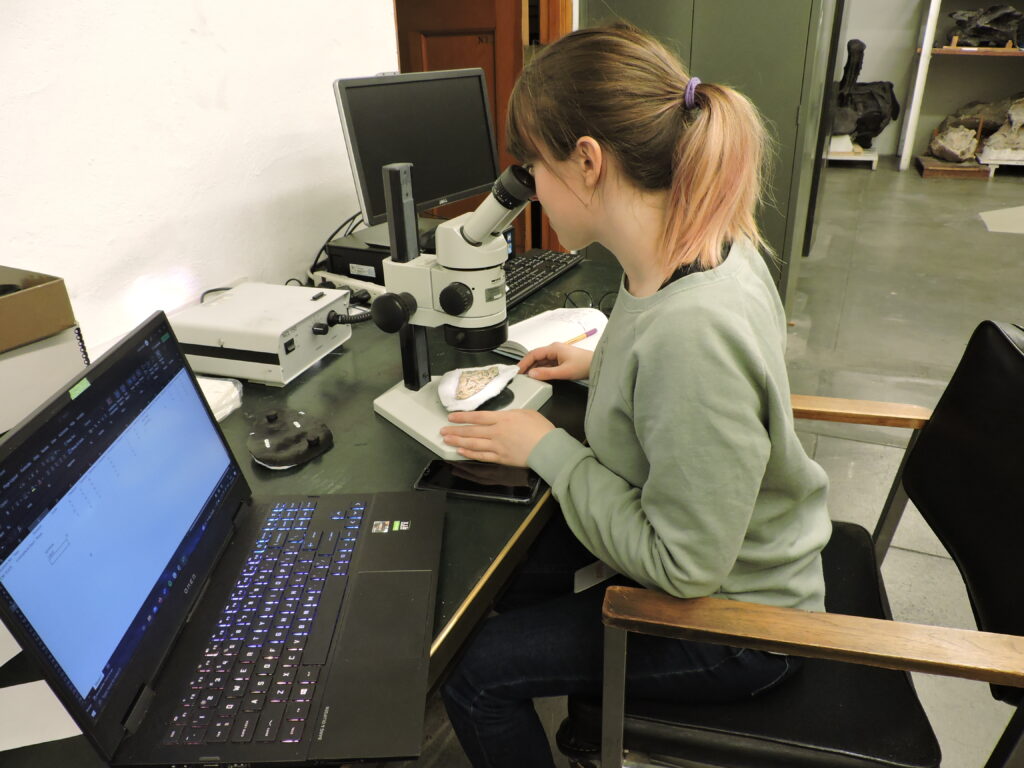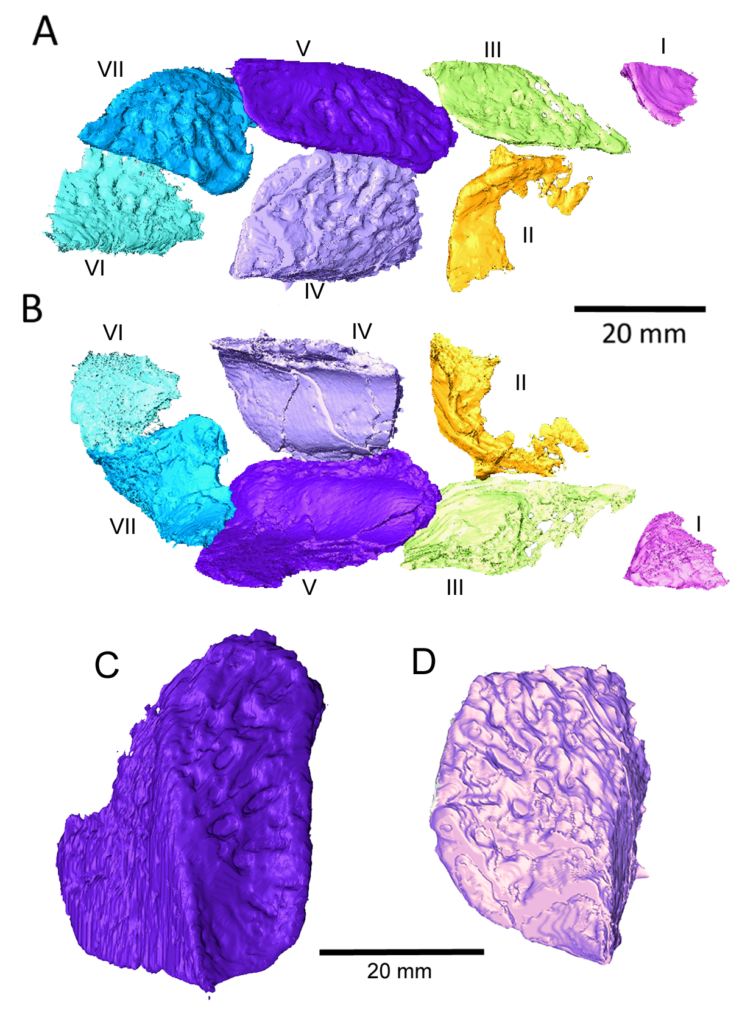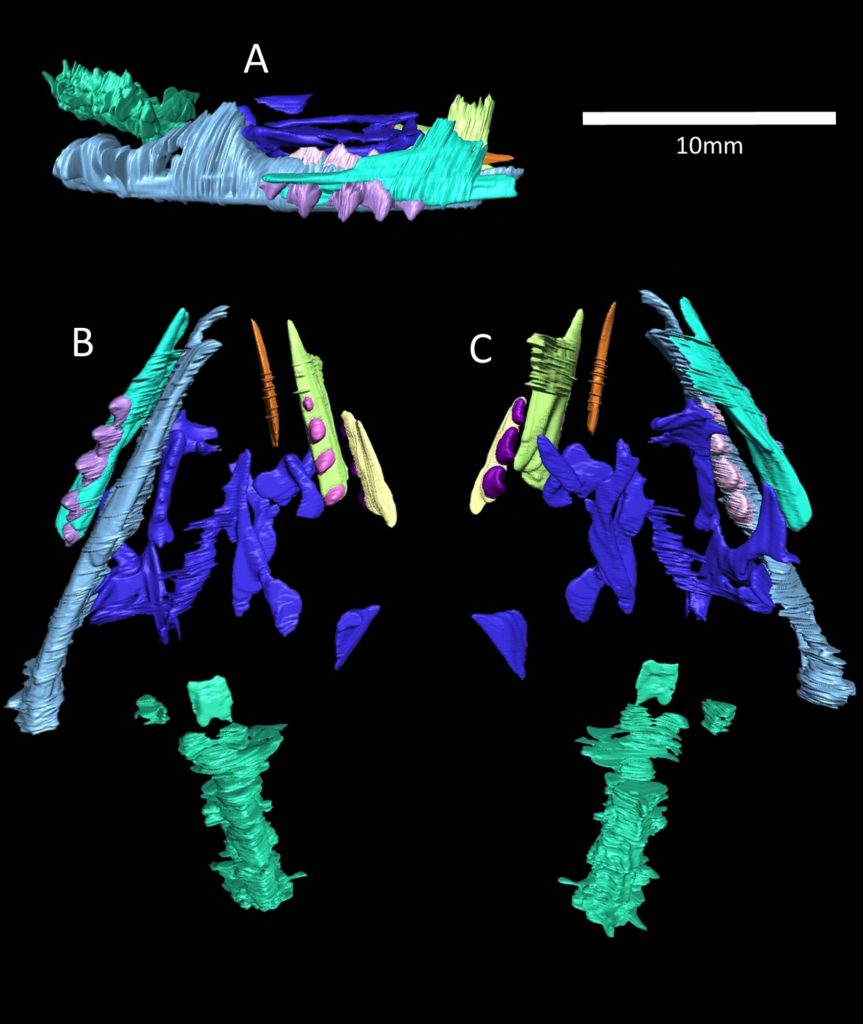Ongoing Projects

Identification of Isolated Teeth
Microsites are extremely useful for palaeontologists seeking to determine faunal composition of ecosystems. Though we only find small fossils in microsites, these are the remains both of small animals and the small parts of large animals (eg. teeth, osteoderms etc.). This mix of fauna of all sizes gives us a greater overall picture of an ecosystem than looking at more complete specimens alone, which are more subject to the usual biases of the fossil record.
Unfortunately, assigning isolated elements to taxa can be very difficult. My research will determine whether 3D geometric morphometrics (a method that quantifies the shape of a fossil) can be used to improve identification of isolated teeth. We are using aetosaur teeth, looking at specimens both where the species is known and unknown, and, if all goes well, will expand our analysis to include other clades.
Locomotion of Triassic Archosaurs
Fitting into the greater aim of the DawnDinos project to test the locomotor superiority hypothesis, we are creating rigorous musculoskeletal models of the pseudosuchian archosaurs Coahomasuchus and Gracilisuchus. These will be used in biomechanical analysis of their locomotion and will give new insights into the movement of Triassic archosaurs.
My work on this project has been presented at the Society of Vertebrate Paleontology annual meeting and the European Association of Vertebrate Palaeontologists annual meeting.
This work has been submitted for publication

Completed Projects
“Completed” may not be totally accurate, but at least my role is done. For now.

Aetosaur Caudal Anatomy
The fossils from the Lossiemouth Sandstone have been a pain to work with for literally hundereds of years. This is because they are softer than the surrounding iron-rich matrix, making extracting them from the rocks almost imposible. Until this project, the only way to study them was to look at the moulds left in the matrix where fossils had once been, and take casts of those, resulting in a massive loss of information.
This was the first time the Elgin fossils were successfully CT scanned, and allowed us to get a better look at the 3D anatomy of the tail of the aetosaur Stagonolepis robertsoni. The figure to the left shows the interlocking caudal osteoderms, articulated as found.
The results of this project are published here. I also made a rather informal video, which can be found here.
Triassic Fauna of Wales
Completed for my master’s thesis, this project saw me prepare, sieve, sort, scan and describe fossils from the Pant-y-ffynnon quarry of South Wales that had sat, unloved, in various institution collections for between 20-70 years. This quarry represents a Late Triassic palaeoisland with a depauperate fauna, dominated by rhynchocephalians. The similarity of the new species of Clevosaurus we described to species found on other palaeoislands in the archipelago that made up Southwest England and Wales was indicative of a potential adaptive radiation. The diminutive size of the archosaurs represented could potentially be an example of insular dwarfism.
The figure to the right shows the skull and cervical vertebrae of Clevosaurus cambrica, the species we discovered and described.
The results of this project are published here.
